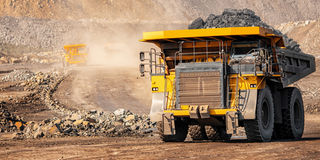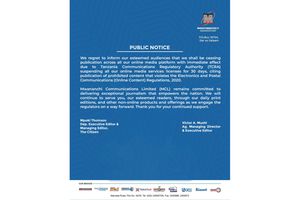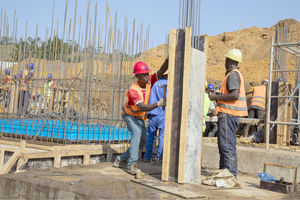Makinikia’ and Tanzania’s economic liberation: The untold story - 15

It is important to underscore that in economic geology the cut-off grades of ores (mined rock that is not yet concentrated) and also concentrates must be reached to merit economic metal extraction. PHOTO | FILE
We previously narrated the presence of gold and silver mineral contents in the makinikia. This week we will discuss the amount of copper and other eight elements/minerals found by the committee.
The eight minerals that were termed as “strategic minerals” were never been reported by either the TMAA or Acacia Company.
The concentrates contained 298 kilogrammes per tonne of copper mineral against the 150 kilogrammes per tonne as reported by TMAA and Acacia.
Again, it was extrapolated that the 277 containers contained 1,655.9 tonnes of copper valued at Sh20.6 billion compared to the reported 1,108 tonnes with a value of Sh13.0 billion as was reported by TMAA and Acacia indicating that 547.9 tonnes of copper valued at Sh7.6 billion was not reported.
The eight minerals allegedly found in the concentrates included sulphur, iron, iridium, rhodium, ytterbium, beryllium, tantalum and lithium.
The report stated that sulphur had a grade of 450 kilogrammes per tonne that is equal to 45 percent by weight, iron was 262.5 kilogrammes in every tonne that is equal to 26.25 percent by weight, iridium was between 0.03 and 0.07 percent; rhodium was between 0.0002 and 0.004 percent; ytterbium was between 0.02 and 0.03 percent; beryllium was between 0.09 and 0.15 percent; tantalum was between 0.05 and 0.08 percent and lithium was between 0.11 and 0.15 percent.
It is important to underscore that in economic geology the cut-off grades of ores (mined rock that is not yet concentrated) and also concentrates must be reached to merit economic metal extraction.
A cut-off grade is the minimum grade required in order for a mineral or metal to be economically extracted from a rock.
Rocks found with mineral/metal content above this grade is considered to be ore; while rocks with metal content below this grade is considered to be waste as will be discussed hereunder.
Sulphur deposits of economic value are usually native sulphur deposits mined from volcanic origins with cut-off grades of over 80 percent sulphur.
Other sources of sulphur are pyrites deposits with a cut-off grades of over 85 percent sulphur. A concentrate of 39 percent sulphur grade reported by the special committee is very low for economic extraction.
Also, iron ore deposits of economic value are usually iron oxide minerals like magnetite and hematite (not sulphides found in the Bulyanhulu and Buzwagi mines) with cut-off grades of 40 percent iron.
Iron sulphide ores or concentrates of 27 percent iron in a concentrate are very uneconomical for extraction.
Recommending that iron and sulphur were unreported and that it was a game plan to loot the nation is incomprehensible.
Iridium and rhodium in gold-copper sulphide ore deposits in the Greenstone geology like that of the Buzwagi and Bulyanhulu mines may contain cut off grades of 0.1 percent and greater.
A grade of 0.03 – 0.07 percent iridium and 0.0002 – 0.004 percent rhodium in a concentrate are very uneconomical for mining and recommending that miner’s intention of not reporting the iridium and rhodium mineral contents was equivalent to an intent of fraud is debatable.
Ytterbium and tantalum are minerals that occur in economic concentrations in carbonatite rocks with cut-off grades of over 0.1 percent ytterbium and 0.1 percent tantalum
No ytterbium or tantalum metal of economic value have been reported in gold-copper sulphides deposits in Greenstone Belts like the Bulyanhulu and Buzwagi deposits.
Even if by a miracle of geo-science economic ytterbium or tantalum is found in sulphides, the grades of 0.019 – 0.025 percent ytterbium and 0.059 – 0.08 percent tantalum as reported by the committee in the concentrate are too low for mining and smelting the resource and again the claim of foul play on part of investors is unfounded.
Next week we will conclude the expert’s view on the reported valuable strategic minerals contained in the concentrates.
Therefore, stay tuned for the next week’s narratives as we complete exploring the mineral contents found in the concentrates.




